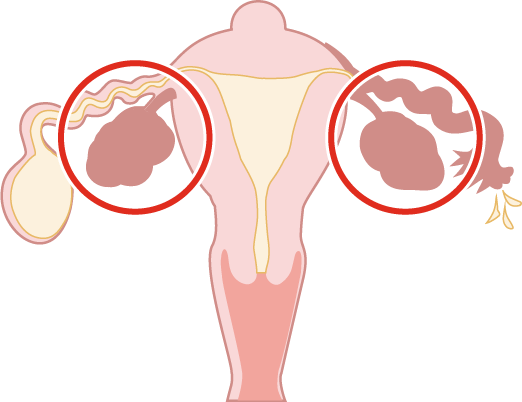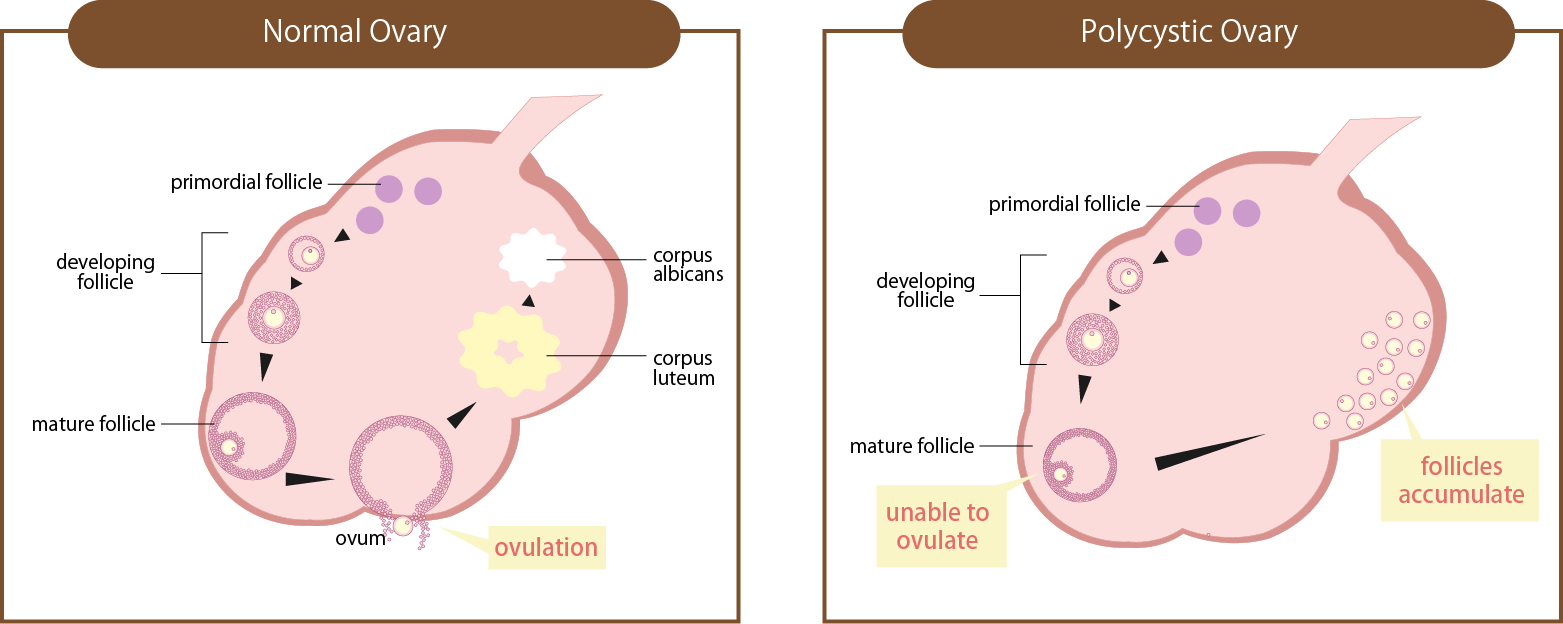The ovaries are organs located deep within the abdomen (pelvis), on both sides of the uterus, and they contain primitive follicles (the original cells that develop into eggs).
During adolescence, mature follicles are released from the ovaries, and menstruation occurs due to the hormones (estrogen and progesterone) secreted by the ovaries.
The ovaries, which are important organs containing reproductive cells, are said to be prone to tumor development.
However, ovarian tumors often have minimal initial symptoms, and by the time they are detected, they have usually progressed significantly.
If you experience symptoms such as abdominal swelling or frequent urination, it is important to seek medical attention promptly.
Various types of cysts and tumors can develop in the ovaries.
They can be easily detected through outpatient ultrasound examinations.
However, since they often do not cause significant symptoms, some individuals may not seek medical attention until the cysts have grown larger.
When the cysts grow larger, they can hinder pregnancy and childbirth, twist (a condition called ovarian torsion), or even become malignant.
Therefore, in most cases, surgery is necessary as a primary treatment option.
|
Name of Condition
|
Main Symptoms
|
|
Serous Cystadenoma
|
A condition in which a thin, smooth-walled tumor contains a low-viscosity, pale yellow, transparent fluid known as serous fluid, which is secreted from the ovaries.
It is typically a unilocular cyst.
Generally, it does not have the potential to become malignant.
|
|
Mucinous Cystadenoma
|
A condition in which a tumor accumulates a high-viscosity, gelatinous fluid.
It often presents as a multilocular cyst with internal compartments separated by walls.
It can be challenging to differentiate from malignant tumors.
It is commonly seen in postmenopausal women.
|
|
Dermoid Cyst/Teratoma
|
A tumor that contains dividing mature cells and masses with components in various stages of maturation, such as hair, teeth, fat, skin tissues, and bones.
It frequently occurs in individuals in their 20s to 30s, and in such cases, it is almost never cancerous.
In rare cases, it can become cancerous in older individuals, such as postmenopausal women.
|
|
Endometrioma/Chocolate Cyst of the Ovary
|
One of the symptoms of endometriosis.
It involves the proliferation of endometrial tissue, found only within the uterus, in various parts of the ovary.
The endometrial tissue and blood undergo discoloration, resembling chocolate.
It is commonly observed in women in their 30s to 40s, and beyond the age of 40, it can occasionally develop into cancer.
|
However, on the other hand, the ovaries may temporarily swell with the menstrual cycle.
If it is a condition where the ovaries are simply filled with fluid, it will naturally disappear within a few months and require observation.
Surgery options such as open surgery, laparoscopic surgery, and ultrasound-guided aspiration are chosen based on the condition of ovarian cysts, tumors, and various examinations.
By suppressing the secretion of ovarian hormones through nasal sprays or injections, it is possible to prevent them from growing larger or even reduce their size.
As symptomatic treatment, low-dose birth control pills can also be used to control menstrual pain and excessive bleeding.
If symptoms are present, if the cyst is too large, or if it is causing infertility, surgery will be necessary.
There are various surgical methods available.
While there is an option to remove the entire uterus, our clinic specializes in preserving fertility and generally performs surgery to remove only uterine fibroids.
In addition to conventional open surgery, there are also laparoscopic (laparoscope-guided) procedures and hysteroscopic resection, which is a surgical method performed under the guidance of a uterine scope.
Each method has its advantages and disadvantages, and whether or not it can be performed depends on individual cases.
The approach will also differ for unmarried individuals, those with specific plans for pregnancy, individuals undergoing infertility treatment, and those nearing menopause.
Therefore, we provide counseling to propose the most suitable method based on each individual's condition.








